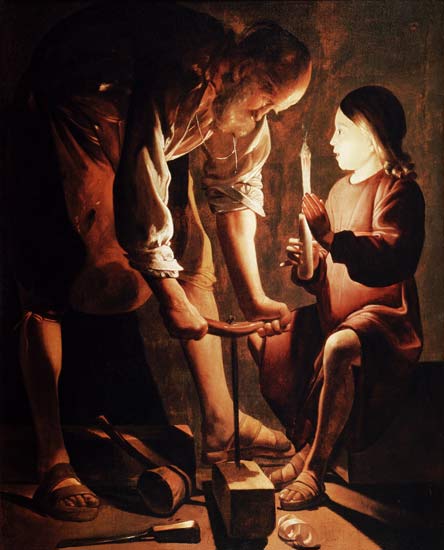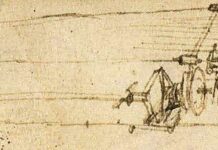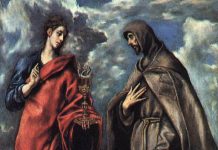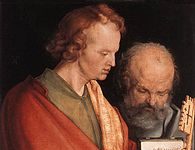Josephology is a relatively new branch of theology that has appeared about two hundred to one hundred-fifty years ago. It has its origins in Saint Thomas Aquinas and some notable medieval theologians, continues to grow and develop through the efforts of Doctors of the Church such as Saint Teresa of Avila, but it really begins to take shape as an official science or field of study around the time of Blessed Pope Pius IX and Pope Leo XIII after Joseph was proclaimed Patron of the Universal Church by the former and after the papal encyclical on Saint Joseph called Quamquam Pluries was written by the latter. However, it was Father Francis Lad Filas, one of the leading figures in Josephology in the twentieth century, who truly made a way for the theological study of Saint Joseph, also known as “Josephite Theology” or “Josephology,” through many of his various publications, particularly through his book called Joseph Most Just: Theological Questions about St. Joseph.[1] This book of his is very good because, as Filas writes, Joseph Most Just “is intended to be more than a devotional book. It should provide a solid theological basis for devotion to St. Joseph, without becoming so technical as to be of use only to professional theologians.”[2] Essentially what Filas is proposing to us is that Joseph Most Just is intended to be a handbook for Josephology and not merely a devotional book that can be used by both Josephologist and layman alike. As such, this book will provide an excellent basis for understanding what Josephology is, and its significance.
First, in accordance with the first rule of logic, which is to define one’s terms, Filas defines for us what the term “Josephology” signifies, or in other words, what the term “Josephology” means. Filas notes that Josephology is covered under the head of the broader field of study known as divinely revealed theology.[3] Further, Josephology is a branch of what is known as dogmatic theology, which is a subdivision of theology which concerns itself with “ordering knowledge to truth,” i.e., the truth of the Catholic Faith, as opposed to ordering truth to action, which is what Moral Theology does.[4] Josephology is a further subdivision of Mariology, which is the theological study of Mary, which in turn is a further subdivision of Christology, which is the theological study of Jesus Christ.[5]
However, some might contend as to how it is possible that one could conduct a theological study of Saint Joseph when theology seems to treat of God rather than His creatures.[6] Such a contention is not new, and Saint Thomas Aquinas considered the same argument in his great work of theology called the Summa Theologiae.[7] Filas in Joseph Most Just echoes Thomas’ response to this objection, writing that “[t]heology treats not only of God directly, but also of all other things in their relationships to their Creator, in so far as these relationships are known in the light of revelation. That is why we can properly define the theology of St. Joseph as a branch of theological knowledge.”[8] Since Joseph is part of the subject matter of theology because of his relationship to God as the Father of God’s Son and as the Husband of the Mother of God, and since these details about Joseph are revealed to us by God in theology, this means that Josephology can be a valid subdivision of the science of theology due to its connection with the formal aspect of this science, viz., the divinely revealed.[9] So regardless of what the material object (the material object being the thing that one is studying) of theology is — be it the Trinity, Christ, Mary, the Apostles, the Old Testament figures, or Joseph — since the formal aspect (that is, the idea or concept that one is trying to get out of the science) remains the same, namely, the things that are revealed by God or the divinely revealed, this is why Josephology can be called a subdivision of theology.
Another objection that might be raised against the formal theological study of Saint Joseph is the concern of taking attention away from Jesus and Mary.[10] An easy reply to this is to point to the proximity of Josephology to Christology and to Mariology. Josephology is a subdivision to Mariology and a further subdivision to Christology, as was said above; Josephology is always discussed in relation to either Christology or in relation to Mariology, as can be seen in the writings of Saint Thomas Aquinas.[11] Therefore, due to the close connection of Josephology with Mariology and Christology, Josephology is actually a mode by which one is better able to understand Mary and Christ more, such that it “helps us penetrate more deeply into the vast mystery of the Incarnation and into the awesome meaning of Mary’s motherhood of God.”[12] Far from taking away from the glory of the King of the Universe and the Queen of Heaven, Josephology actually increases the glory of Jesus and Mary by pointing out how the glory of Joseph contributes to their glory in how Joseph relates to Mary and Jesus through his two-fold vocation as father of Christ and husband of Mary,[13] so as to gain a better appreciation of Jesus and Mary through a better appreciation of Joseph.
This leads to a discussion of why it is important to know more about Joseph. Since will follows intellect,[14] just as any sort of desire for something only occurs when one knows something about the desirable thing,[15] a Catholic can only appreciate, love, and be devoted to Joseph if he knows more about the Great Patriarch.[16] Thus, Josephology should be the foundation for one’s knowledge about Joseph, and only after having a true, rational science of Joseph can a Catholic love and be truly devoted to him.[17]
To develop a rigorous and robust Josephology, however, requires matter to abstract from, and this lack of material or literature written concerning Saint Joseph is a huge problem in Josephology. For one thing, the Fathers of the Church are nearly silent about Joseph.[18] There is not much in the writings of the Church Fathers about the Just Man, and the only Church Fathers that actually have written somewhat consistently and significantly about Joseph are Saint Augustine of Hippo, Saint Ambrose, Saint Jerome, and Saint Ephrem the Syrian. This is problematic for Josephology because the Fathers of the Church were considered to hand down the authentic teaching of Christ and the Apostles, such that when they would speak unanimously about Church doctrine, what they said was considered to be infallible and de fide, and thus must be believed by Catholics;[19] thus, such a unanimous declaration about Saint Joseph by the Church Fathers would be an excellent source of information for Josephology,[20] and the lack of such a declaration constitutes such a loss for Josephite theology. Even when the Fathers of the Church do say something about Joseph, it is usually either a passing commentary on the gospels concerning Saint Joseph which deal with only the more self-evident details about him, or some of the Fathers of the Church pull from sources which are “apocryphal legends” concerning the life of Saint Joseph which are not part of the Canon of the Church.[21] Thus, when the task is left to modern-day Josephologists to discuss the deeper and more specific theological questions about Joseph such as his bodily assumption[22], his freedom from Original Sin through his Prenatal Sanctification,[23] and his freedom from personal or actual sin,[24] Josephologists are unable to stand on the strong shoulders of the Fathers of the Church when it comes to treating of these more specific theological topics about Joseph, making their claims to have less weight than it could if the Church Fathers hypothetically wrote something about these questions in a unanimous mode.[25]
The second obstacle is on the part of the lack of dogmatic pronouncements by the Church concerning Joseph. Despite the various significant papal pronouncements on Saint Joseph by the Church, such as Joseph’s proclamation as Patron of the Catholic Church and Pope Leo XIII’s landmark encyclical about Joseph Quamquam Pluries, Filas tells us that in such decrees Josephologists cannot discern “dogmatic notes or values,” which poses a problem for Josephology because there is nothing more certain to build one’s Josephology upon than an infallible, dogmatic declaration of the Church, and since no such definite, dogmatic pronouncements exist on Joseph,[26] Josephologists are required to be creative in how they navigate the writings of Scripture, the Church Fathers, the Scholastics, and Church documents to try to piece together from these sources something to support claims made about the more specific questions concerning Saint Joseph.
The final obstacle is on the part of Josephologists. According to Filas, much of what has been written in Josephology comes from sources written in Latin, German, French, and Spanish; there is not much in Josephology written in English,[27] which was one of the reasons why he wrote Joseph Most Just, namely, to make a work in Josephite theology available in English so as to expand research in Josephology.[28] Even so, the problem with much of what has been written about Joseph is that most of it is blinded by the devotion of the authors of such books, with the result that it leads to “untenable excesses” in their writings on account of their great passion and zeal.[29] This has an effect that is contrary to the intentions of such authors, making readers of such over-zealous and erroneous works about Joseph judge Josephite theology as heterodox and worthy of contempt, shunning any new literature written about the saint, which stunts the possibility for growth in Josephology if theologians refrain from doing research in this science out of fear of dabbling in heresy.[30] Such an approach makes Josephologists overly-cautious about writing or claiming anything new, well-founded, and orthodox about the Saint Joseph because of a disordered desire to avoid heresy where there is no heresy, inhibiting the progress of Josephology’s development.[31] There is hence such a great need for a rational, theologically-sound Josephology, with conclusions about Saint Joseph deduced from premises that are found in Scripture, the Church Magisterium, the Fathers of the Church, Scholasticism — particularly Thomism[32] — and from Church documents, so that people are led to the truth about Saint Joseph through an orthodox, scientific Josephology, as opposed to an overly-zealous, emotionally-charged one, and so grow in greater love and devotion for Joseph.[33]
In closing, I conclude this article with an exhortation to all Josephologists and to those theologians and Josephologists in-training. Devotion to Saint Joseph and Josephology are starting to pick up speed; they are growing rapidly, not only in these past two hundred to one hundred-fifty years, but especially in the last year with the popularity of Father Donald Calloway’s book Consecration to Saint Joseph: The Wonders of Our Spiritual Father. As I observed in one of my other articles, it is no coincidence that Pope Francis proclaimed the Year of Saint Joseph after Father Calloway’s book spread like wildfire, just as it is no coincidence that Blessed Pope Pius IX proclaimed Saint Joseph the Patron of the Catholic Church after a large group of laity, priests, bishops, and members of religious societies got together and asked the Pope to proclaim Joseph the Patron of the Universal Church.[34] If the history of the Church has proven anything, it is clear that when theologians start writing and discussing among one another about a certain doctrine or doctrines of the Church, this inspires the laity to strive to understand what the theologians are trying to say, and when this goes on long enough, the Pope gives ear to his theologians and his people and, by the inspiration of the Holy Spirit, makes a dogmatic pronouncement to clarify the discussion. For Isidore of Isolanis once prophesied that “the sound of victory will be heard in the Church when the faithful recognize the sanctity of St. Joseph,”[35] and that “sound of victory” that he made reference to is the Age of Peace promised at Fatima by the Triumph of the Immaculate Heart of Mary.[36] Since Joseph is the Patron of the Triumph of Mary’s Immaculate Heart, Isidore of Isolanis is telling us that Joseph’s recognition by the Church’s faithful is a condition or prerequisite for this Age of Peace, which ends in a dogmatic pronouncement or pronouncements about the eminent sanctity of Saint Joseph, which will usher in this Age of Peace.[37] In fact, this dogmatic pronouncement has been prefigured or foreshadowed for us in Patris Corde. For Patris Corde is an apostolic letter, which is a formal papal teaching document, and despite the fact that apostolic letters are not used for dogmatic definitions of doctrine, we see in Patris Corde confirmation of Saint Joseph’s first great privilege, viz., Joseph’s great dignity as the Image of God the Father for the eternally and only-begotten Son of God the Father Jesus Christ when Pope Francis writes in Patris Corde that “[i]n his relationship to Jesus, Joseph was the earthly shadow of the heavenly Father.”[38] Thus, since the doctrine which teaches that Saint Joseph is the Image or Shadow of God the Father is in a formal papal teaching document, — viz., in paragraph seven of the apostolic letter Patris Corde — this means that this doctrine has made its way into the ordinary and universal Magisterium of the Church, and thus the Church is officially teaching that Saint Joseph is the Image or Shadow of God the Father. We know this because Lumen Gentium teaches us that one of the signs of a papal teaching that requires our “religious submission of intellect and will” is the nature or character of the document within which the teaching is promulgated.[39] The nature or character of Patris Corde is that it is a formal papal teaching document on account of Patris Corde being an apostolic letter, and hence this means that due to the nature or character of Patris Corde as a formal papal teaching document, Pope Francis is officially teaching through his authentic Papal Magisterium that Saint Joseph is the Image of God the Father. Thus, this means that the Josephite doctrine which teaches that Saint Joseph is the Image or “Shadow” of God the Father is a Catholic doctrine which must be adhered to with religious submission of mind and will, and this also means that it is “erroneous” to deny that Saint Joseph is the Image or “Shadow” of God the Father.[40] I hope and pray that Josephologists will do their part to lift Saint Joseph out of the obscurity which he has been hidden in the Church for so long, as Joseph the Patriarch was hidden and nearly forgotten in Potiphar’s prison, by producing a rational, orthodox Josephology, so that just as the pre-eminence of Joseph the Patriarch was acknowledged by Pharaoh before all the land of Egypt when Pharaoh the King of Egypt made Joseph the Patriarch lord of his house and prince over all his possessions, so also will the Pope acknowledge Saint Joseph’s pre-eminence by proclaiming Joseph’s great privileges as dogmas, ushering in the Age of Peace and the Restoration of Christendom[41] because the faithful finally see the importance of Josephology and the pre-eminent sanctity of Saint Joseph — on account of the efforts of Josephologists to further the theological study of Saint Joseph, to further Josephology. For this is what Pope Francis — and, more importantly, what Jesus Christ, who speaks through His vicar the Pope — is trying to communicate to us through the publication of Patris Corde; for, once again, since Patris Corde is an apostolic letter, and since the purpose of an apostolic letter is to give counsel to the Church on points of doctrine that require deeper explanation in the light of particular circumstances or situations in various parts of the world, therefore, the very publication of Patris Corde is a signal or a message to us Catholics and especially to theologians and to Josephologists from God the Father Himself that in light of particular circumstances or situations in various parts of the world, both good and bad,[42] including the rise of the theological study of Saint Joseph, viz., Josephology, and the increased popularity of devotion to Saint Joseph as evidenced by the success of Father Donald Calloway’s book Consecration to Saint Joseph, there is a point of doctrine that requires deeper explanation, and this point of doctrine is Saint Joseph’s great dignity as the Living Image of God the Father.[43] Further, the appearance of this new teaching on Saint Joseph in paragraph seven of Patris Corde — viz., Saint Joseph the Image or Shadow of God the Father — is also encouragement from God the Father through the action of the Holy Spirit that this teaching about Saint Joseph is on its way to becoming a dogma of the Church someday, since this teaching has appeared for the first time in a papal document, and it is also encouragement from Our Heavenly Father for theologians and Josephologists to write more about Josephology, especially about the teaching of Saint Joseph the Image of God the Father. My sincere hope is that more theologians and Josephologists will heed Our Heavenly Father’s counsel and exhortation in Patris Corde to discuss and write more about Saint Joseph and Josephology, and to see Joseph as the Image of God’s Fatherhood, so that Saint Joseph will no longer be known as “the Forgotten Saint,” and will no longer be “[a] father in the shadows,”[44] but rather reflect and radiate the Fatherhood of God the Father for all the world to see.
[1] Francis L. Filas, S.J., S.T.D., Joseph Most Just: Theological Questions about St. Joseph (Milwaukee: The Bruce Publishing Company, 1956), 2. Sadly this book is no longer in print, but Google has made Joseph Must Just available to be downloaded for free online, and it can be found here: https://books.google.ca/books/about/Joseph_Most_Just.html?id=RZeItgAACAAJ&redir_esc=y
[2] Ibid., vii.
[3] Ibid., 3-4. Divinely Revealed Theology is distinguished from Natural Theology, the latter of which is a subdivision of Metaphysics, see Fr. Chad Ripperger, F.S.S.P., Ph.D., An Initial Dictionary of Scholastic Terms and Principles, comp. Fr. Chad Ripperger, F.S.S.P., Ph.D., 2001, https://web.archive.org/web/20011204111408/http://www.alltel.net/~cr25211/Dictionary.htm, emphasis added: “[M]etaphysics is broken into three branches: (1) First Philosophy, (2) Ontology (sometimes called metaphysics in the more restrictive sense) and (3) Natural Theology.” This article will discuss theology as the term is understood to signify Divinely Revealed Theology, and not Natural Theology.
[4] Ibid., 4; See also Dr. Ludwig Ott, Fundamentals of Catholic Dogma, ed. James Canon Bastible, D.D., trans. Patrick Lynch, Ph.D. (Charlotte: TAN Books, 1974), 3, for an explanation of the three branches that the science of theology is divided into, which are: 1) Dogmatic Theology; 2) Biblical-historical Theology; 3) Practical Theology, under which Moral Theology is a further subdivision.
[5] Filas, Joseph Most Just, 4.
[6] Ibid., 3.
[7] Saint Thomas Aquinas, Summa Theologiae, trans. Fr. Laurence Shapcote, O.P., ed. John Mortensen and Enrique Alarcon (Lander: The Aquinas Institute for the Study of Sacred Doctrine, 2012), I, q. 1, a. 3, obj. 2, https://aquinas.cc/la/en/~ST.I: “Praeterea, in sacra doctrina tractatur de angelis, de creaturis corporalibus, de moribus hominum. Huiusmodi autem ad diversas scientias philosophicas pertinent. Igitur sacra doctrina non est una scientia.”
[8] Filas, Joseph Most Just, 3, emphasis added.
[9] Ibid., 3-4; Aquinas, Summa Theologiae, I, q. 1, a. 3, ad 2: “Et similiter ea quae in diversis scientiis philosophicis tractantur, potest sacra doctrina, una existens, considerare sub una ratione, inquantum scilicet sunt divinitus revelabilia, ut sic sacra doctrina sit velut quaedam impressio divinae scientiae, quae est una et simplex omnium.” See also Ibid., co: “Quia igitur sacra Scriptura considerat aliqua secundum quod sunt divinitus revelata, secundum quod dictum est, omnia quaecumque sunt divinitus revelabilia, communicant in una ratione formali obiecti huius scientiae. Et ideo comprehenduntur sub sacra doctrina sicut sub scientia una.”
[10] Filas, Joseph Most Just, 1.
[11] Aquinas, Summa Theologiae, III, q. 28, a. 1, ad 1; Saint Thomas Aquinas, Commentary on the Sentences, trans. Beth Mortensen, STD, ed. and annot. Michael Bolin, PHD, Jeremy Holmes, PHD, and Peter Kwasniewski, PHD (Aquinas Institute for the Study of Sacred Doctrine), IV, d. 30, q. 2, a. 2, ad 4, https://aquinas.cc/la/en/~Sent.I; Ibid., a. 3, ad 4.
[12] Filas, Joseph Most Just, 4.
[13] Ibid.
[14] Aquinas, Summa Theologiae, I, q. 19, a. 1, co: “voluntas enim intellectum consequitur.”
[15] Ibid., q. 59, a. 1, co.
[16] Filas, Joseph Most Just, 1.
[17] Ibid., 4.
[18] Ibid., 4-9.
[19] Ibid; Ott, Fundamentals of Catholic Dogma, 9; Fr. Chad Ripperger, Ph.D., The Consensus of the Fathers and Theologians (Sensus Traditionis Press, 2020), 11-24; Fr. Chad Ripperger, Ph.D., Magisterial Authority (Sensus Traditionis Press, 2014), 27-29; Fr. Chad Ripperger, The Principle of the Integral Good (Sensus Traditionis Press, 2018), 15n12; Heinrich Denzinger, Compendium of Creeds, Definitions, and Declarations on Matters of Faith and Morals, 43rd ed., ed. Peter Hünermann, Robert Fastiggi, and Anne Englund Nash (San Francisco: Ignatius Press, 2012), Gregory IX, Ab Aegyptiis (Denz. 824/442), Sixtus IV, Romani Pontificis provida, (Denz. 1407), (Denz. 370/173), (Denz. 396/199), (Denz. 399/200b), (Denz. 1600/843a), (Denz. 1692/905), (Denz. 2855/1672).
[20] Filas, Joseph Most Just, 8.
[21] Ibid; Mark I. Miravalle, STD, Meet Your Spiritual Father: A Brief Introduction to St. Joseph (Lighthouse Catholic Media and Marian Press, 2015), 35-41: Such apocryphal accounts are called The Protoevangelium of James, The Gospel of Pseudo-Matthew, and The Coptic History of Saint Joseph the Carpenter.
[22] Cf. Edward Healy Thompson, M.A., The Life and Glories of Saint Joseph: Husband of Mary, Foster-Father of Jesus, and Patron of the Universal Church (Charlotte: TAN Books, 1888), 387-400; Cf. Joshua Francis Filipetto, “What We Should Believe About Saint Joseph,” Catholic Insight, September 15, 2022, https://catholicinsight.com/what-we-should-believe-about-saint-joseph/; Cf. Filas, Joseph Most Just, 8 and 70-77.
[23] Ibid., 58 and 60-64; Cf. Thompson, The Life and Glories of Saint Joseph, 39-45, 46-47, 49-50, and 52; Cf. Joshua Francis Filipetto, “What We Should Believe About Saint Joseph,” Catholic Insight, September 15, 2022, https://catholicinsight.com/what-we-should-believe-about-saint-joseph/.
[24] Cf. Ibid; Cf. Thompson, The Life and Glories of Saint Joseph, 49-52 and 52; Cf. Filas, Joseph Most Just, 8 and 64-70.
[25] Filas, Joseph Most Just, 8-9.
[26] Filas, Joseph Most Just, 5-6.
[27] Ibid., 2.
[28] Ibid., vii.
[29] Ibid., 1-2.
[30] Ibid., 2.
[31] Ibid.
[32] For an account on the necessity of a Thomistic Josephology, see Joshua Francis Filipetto, “A True Thomistic Versus an Oddly Ockhamist Josephology,” Catholic Insight, October 8, 2021, https://catholicinsight.com/a-true-thomistic-versus-an-oddly-ockhamist-josephology/.
[33] Filas, Joseph Most Just, 2.
[34] Joshua Filipetto, “Speaking Out: Go to Joseph before it’s too late,” The Catholic Register, November 3, 2021, https://www.catholicregister.org/ysn/youthcolumn/item/33671-speaking-out-go-to-joseph-before-it-s-too-late; Donald H. Calloway, MIC, Consecration to St. Joseph: The Wonders of Our Spiritual Father (Stockbridge: Marian Press, 2020), 97-100.
[35] Miravalle, Meet Your Spiritual Father, back cover. For the original prophecy of Father Isidore of Isolanis, see Fr. Isidorus de Isolanis, O.P., Summa de Donis Sancti Joseph (1522), Denuo Edita Berthier, (Rome: S.C. de Propaganda Fide, 1887), https://books.google.ca/books/about/Summa_de_donis_de_S_Joseph.html?id=MfQXmAEACAAJ&redir_esc=y, pars tertia, cap. vi (171) and cap. viii (177-178): “Ultima particula erit exultatio ingens futura in militanti Ecclesia pro sanctitatis divini Ioseph certa notitia. Non enim Spiritus Sanctus deficiet a movendis cordibus fidelium, donec omne imperium militantis Ecclesiae exultans, divinum Ioseph nova prosequatur veneratione, condat coenobia, ecclesias ac altaria in eius erigat honore. Haec autem aptis imaginibus mystice designantur [cap. vi (171)] …Post quae suscitavit Dominus sanctum Ioseph sibi, ad honorem nominis sui, caput et patronum peculiarem imperii militantis Ecclesiae. Ante quoque diem iudicii futurum est ut omnes populi cognoscant, venerentur et adorent nomen Domini, ac magna Dei munera quae Deus ipse in sancto posuit Ioseph, et latere pene voluit longa per tempora. Quocirca abundabit nomen sancti Ioseph muneribus omnium bonorum terrae. Ædificabunt templa ad illius honorem, festa celebrabunt et vota vovebunt eidem populi et solvent. Aperiet enim Dominus aures praecordiorum intellectus, et viri magni scrutabuntur interiora Dei dona in sancto abscondita Ioseph, et invenient thesaurum optimum, qualem apud sanctos patres Veteris Instrumenti non invenerunt… In calendariis sanctorum nomen decantabitur sancti Ioseph, et iam non erit in caudam, sed in caput. Fiet enim de illo festum praecipuum et venerabile. Mandabit enim Christi Vicarius in terris, Sancto suadente Spiritu, ut festum patris putativi Christi, sponsi Reginae mundi, hominis sanctissimi, celebretur in omnibus finibus imperii militantis Ecclesiae [cap. viii (177-178)].”
[36] “St. Joseph: Patron of the Triumph of Mary’s Immaculate Heart,” YouTube, September 20, 2015, https://www.youtube.com/watch?v=eu-DVXd7PtU.
[37] Ibid; Fr. Isidorus de Isolanis, O.P., Summa de Donis Sancti Joseph, pars tertia, cap. vi (171) and cap. viii (177-178).
[38] Pope Francis, Patris Corde, Libreria Editrice Vaticana, December 8, 2020, para. 7, http://www.vatican.va/content/francesco/en/apost_letters/documents/papa-francesco-lettera-ap_20201208_patris-corde.html, emphasis mine: “[Sanctus Joseph] erga Iesum in terra erat umbra Patris Caelestis.”
[39] Paul VI, Lumen Gentium, Libreria Editrice Vaticana, November 21, 1964, https://www.vatican.va/archive/hist_councils/ii_vatican_council/documents/vat-ii_const_19641121_lumen-gentium_en.html, n. 25, emphasis mine: “Hoc vero religiosum voluntatis et intellectus obsequium singulari ratione praestandum est Romani Pontificis authentico magisterio etiam cum non ex cathedra loquitur; ita nempe ut magisterium eius supremum reverenter agnoscatur, et sententiis ab eo prolatis sincere adhaereatur, iuxta mentem et voluntatem manifestatam ipsius, quae se prodit praecipue sive indole documentorum, sive ex frequenti propositione eiusdem doctrinae, sive ex dicendi ratione. [This religious submission of mind and will must be shown in a special way to the authentic magisterium of the Roman Pontiff, even when he is not speaking ex cathedra; that is, it must be shown in such a way that his supreme magisterium is acknowledged with reverence, the judgments made by him are sincerely adhered to, according to his manifest mind and will. His mind and will in the matter may be known either from the character of the documents, from his frequent repetition of the same doctrine, or from his manner of speaking.]” See also Codex Iuris Canonici, Libreria Editrice Vaticana, https://www.vatican.va/latin/latin_codex.html#DE%20ECCLESIAE%20MUNERE%20DOCENDI, Can. 752, emphasis mine: “Non quidem fidei assensus, religiosum tamen intellectus et voluntatis obsequium praestandum est doctrinae, quam sive Summus Pontifex sive Collegium Episcoporum de fide vel de moribus enuntiant, cum magisterium authenticum exercent, etsi definitivo actu eandem proclamare non intendant christifideles ergo devitare curent quae cum eadem non congruant.”
[40] Joseph Card. Ratzinger, Prefect, and Tarcisio Bertone, S.D.B., Archbishop Emeritus of Vercelli and Secretary, “Doctrinal Commentary on the Concluding Formula of the Professio fidei,” Congregation for the Doctrine of the Faith, Libreria Editrice Vaticana, June 29, 1998, https://www.vatican.va/roman_curia/congregations/cfaith/documents/rc_con_cfaith_doc_1998_professio-fidei_en.html, n. 10: “The third proposition of the Professio fidei states: ‘Moreover, I adhere with religious submission of will and intellect to the teachings which either the Roman Pontiff or the College of Bishops enunciate when they exercise their authentic Magisterium, even if they do not intend to proclaim these teachings by a definitive act’. To this paragraph belong all those teachings – on faith and morals – presented as true or at least as sure, even if they have not been defined with a solemn judgement or proposed as definitive by the ordinary and universal Magisterium. Such teachings are, however, an authentic expression of the ordinary Magisterium of the Roman Pontiff or of the College of Bishops and therefore require religious submission of will and intellect.18 They are set forth in order to arrive at a deeper understanding of revelation, or to recall the conformity of a teaching with the truths of faith, or lastly to warn against ideas incompatible with those truths or against dangerous opinions that can lead to error.19 A proposition contrary to these doctrines can be qualified as erroneous or, in the case of teachings of the prudential order, as rash or dangerous and therefore ‘tuto doceri non potest’.” It is worth noting that endnote 18 of the “Doctrinal Commentary on the Concluding Formula of the Professio fidei” is actually citing paragraph 25 of Lumen Gentium, which I cited above in endnote 39 of this article. See also Codex Iuris Canonici, Libreria Editrice Vaticana, https://www.vatican.va/latin/latin_codex.html#DE%20ECCLESIAE%20MUNERE%20DOCENDI, Can. 752, emphasis mine: “Non quidem fidei assensus, religiosum tamen intellectus et voluntatis obsequium praestandum est doctrinae, quam sive Summus Pontifex sive Collegium Episcoporum de fide vel de moribus enuntiant, cum magisterium authenticum exercent, etsi definitivo actu eandem proclamare non intendant christifideles ergo devitare curent quae cum eadem non congruant.”
[41] “St. Joseph: Patron of the Triumph of Mary’s Immaculate Heart,” YouTube, September 20, 2015, https://www.youtube.com/watch?v=eu-DVXd7PtU.
[42] Joshua Filipetto, “Speaking Out: Go to Joseph before it’s too late,” The Catholic Register, November 3, 2021, https://www.catholicregister.org/ysn/youthcolumn/item/33671-speaking-out-go-to-joseph-before-it-s-too-late.
[43] In Sinu Jesu: When Heart Speaks to Heart—The Journal of a Priest at Prayer (USA: Angelico Press, 2016), 246, emphasis mine: “Such a man was Saint Joseph. He was the living image of My Father, and he was chosen by My Father to be a father to Me in My sacred humanity.”
[44] Pope Francis, Patris Corde, para. 7.











